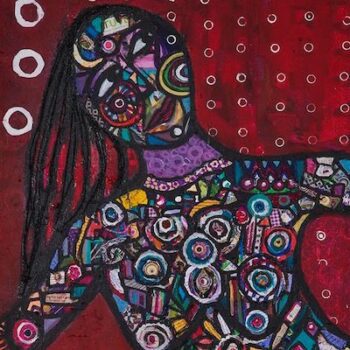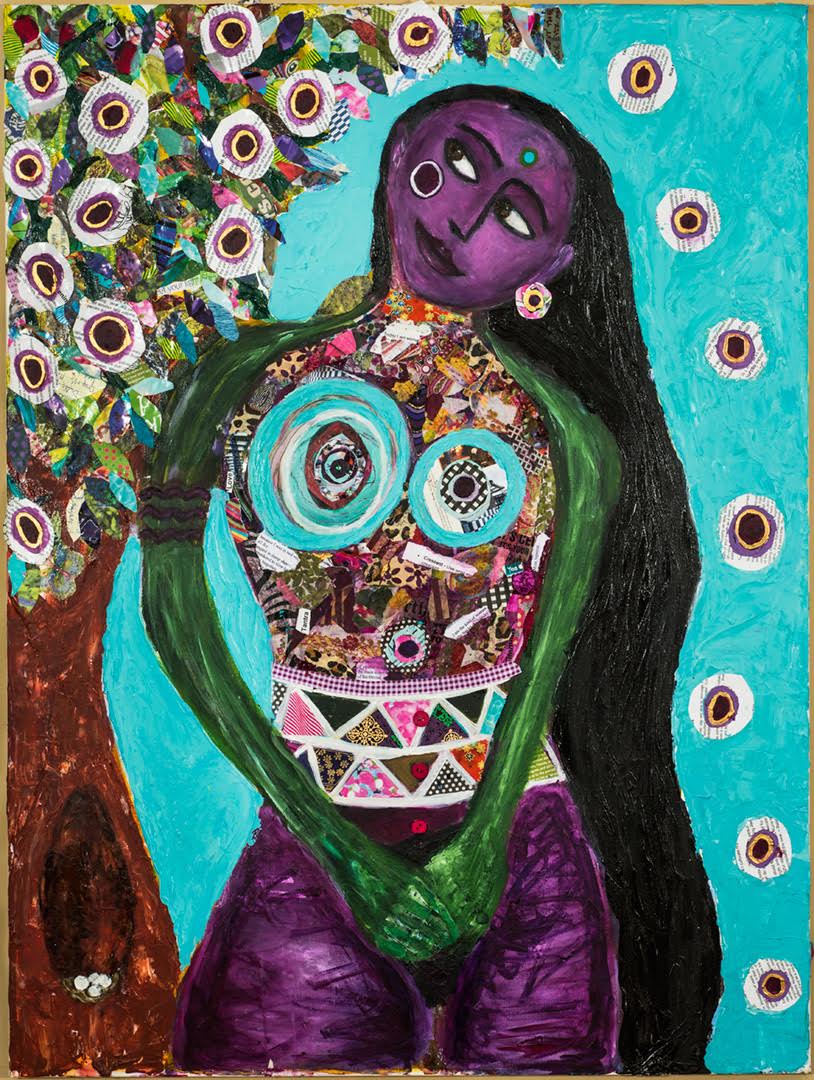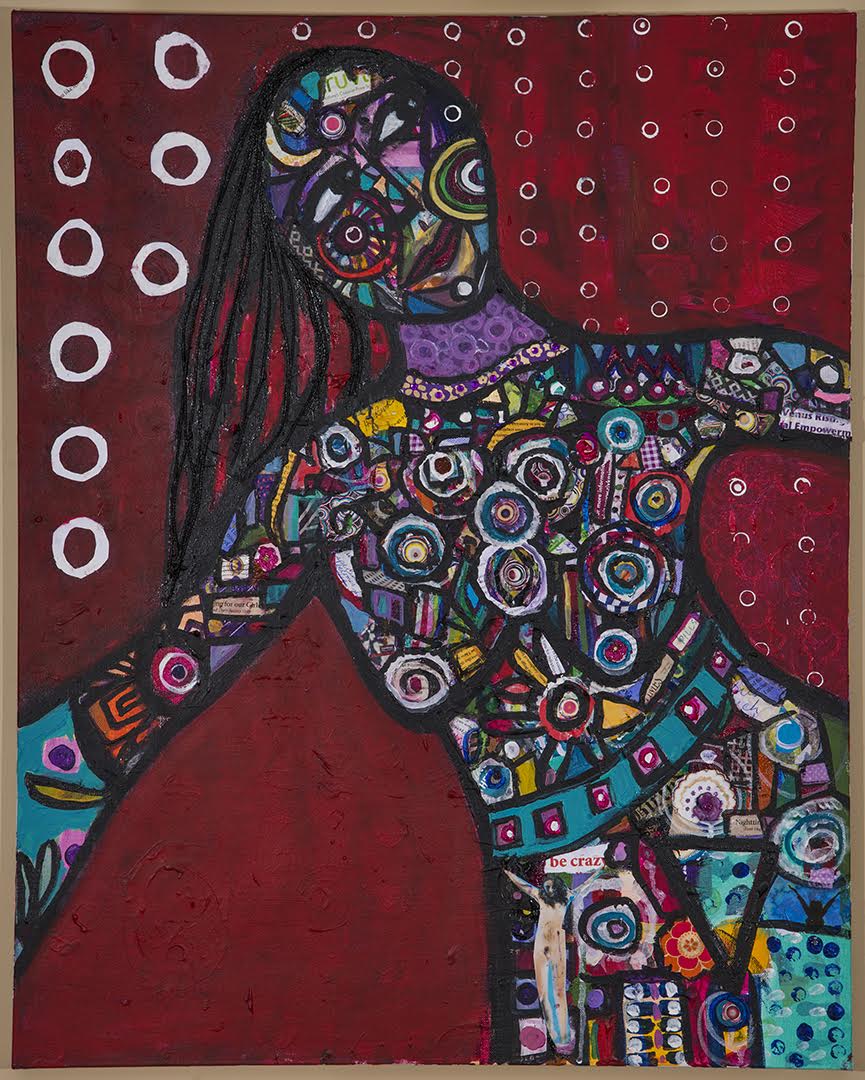
When my daughter Mikayla returned home for a break during her first semester at college, she announced that she wanted to bake, for the second time, a batch of croissants. Her first attempt had been perfect: buttery layers that were light and fluffy inside, golden and crispy outside. A well-traveled neighbor had tasted one and declared they were the best she’d eaten this side of France.
Croissants take time, so, during her second effort, Mikayla fit the many stages of mixing and rolling, cooling and rolling again between visiting with her sister and best friend, and preparing for her upcoming exams. Halfway through the process, the mixture felt tougher than the first time she had made them. She began to question herself, searching back over all the things she had done. Should she have taken the dough out of the refrigerator sooner? Had she kneaded it too long in the bowl?
I helped with the final stage of cutting the dough to form into crescents. She brushed each with an egg wash and waited for another rising before placing the tray in the oven. I could smell the delicious aroma as they baked but when I returned to the kitchen to investigate, I knew from her face that something had gone wrong.
What had come out of the oven looked beautiful but the inside was too dense. Mikayla was upset. Worse, she started doubting her skills as a baker. All that time and effort! All the butter and flour and eggs! And she hated to disappoint anyone waiting for a taste of a perfect croissant.
Like Mikayla, I too have a strong inner critic and I know that we are not alone. Self-judgment is an invasive species that flourishes under all kinds of conditions. My particular variety, ubiquitous among women, is linked to a distorted and unforgiving body image.
 Something was wrong with my right nipple when I was born. Though the asymmetry was immediately obvious, the obstetrician assured my mother I would grow out of it. For a child, an indented nipple isn’t such a big deal but when the first bloodstains appeared in the crotch of my underwear, everything changed. My left breast developed normally. The right side stayed flat, pink and innocent with no areola. One side of me was still a child while the other side was determined to become a woman.
Something was wrong with my right nipple when I was born. Though the asymmetry was immediately obvious, the obstetrician assured my mother I would grow out of it. For a child, an indented nipple isn’t such a big deal but when the first bloodstains appeared in the crotch of my underwear, everything changed. My left breast developed normally. The right side stayed flat, pink and innocent with no areola. One side of me was still a child while the other side was determined to become a woman.
Most adolescents prefer not to talk about anything embarrassing. I rarely shared my feelings about my body with anyone. When the doctors I visited were unable to offer a clear explanation about why I was becoming so grossly lopsided, I was convinced I was irreparably damaged. I quietly took matters into my own hands by sewing extra padding into my bathing suits and bras to hide, as well as I could, my disfigurement.
When I was sixteen, my mother took me to see a plastic surgeon. He showed us a model of a breast implant—smooth, squishy and made of silicone. “An easy operation,” he said. “And with such excellent results!”
I found his air of authority intimidating and his frank discussion of my “deformity” mortifying. On the other hand, I hated adding cotton balls or Kleenex tissues to my bras to even out my homemade prostheses and longed to stop hiding from myself and everyone else.
During a second preoperative visit, the surgeon led me, without my mother, into a room filled with medical students, both men and women. I was wearing nothing but panties and a too-large hospital gown tied in the back. He wanted me to disrobe. I balked. “They’re here to learn,” he said, “and are very interested in your case.”
The students, all of them young and attractive, were clutching small notebooks, their pencils ready. One held a large camera. The doctor guided me toward a blank wall, grasped the neck of my hospital gown and tugged. The fabric slipped off my shoulders and would have fallen in a puddle on the floor if I hadn’t caught it with my hips. “Stay there,” he said and stepped away.
Like a firing squad waiting for orders, the students stood perfectly still. On the doctor’s command, the camera moved in. The lens focused on my sorry child-like nipple as if it were a bull’s eye on a target, the shutter clicking in sharp rapid-fire succession. When the photographer decided he had taken enough shots, he stepped back and the others surged toward me, paparazzi pointing and asking questions. I stared over their heads at the ceiling.
On the appointed day of surgery, I was once again given a hospital gown and instructed to sit on a gurney. My doctor came over and placed a hand on my shoulder. He leaned in close. “Your future husband is going to love your new breast,” he said and winked. “All perky and perfect.”
He backed away, and an IV was inserted into my arm. Since my procedure was booked as an outpatient surgery, I was given a local anesthesia and a relaxant. I lay splayed across the table in that cold operating room, strangers hovering, eyes staring, nausea and speechlessness and bright lights spinning.
The Miriam-Webster Dictionary offers this simple definition of shame: “A feeling of guilt, regret or sadness that you have because you know you have done something wrong.” Had I done something wrong? I didn’t think so. When other girls had giggled about training bras and who among them had the biggest breasts, I had felt as if some power beyond my control or understanding had conspired to make me different. I wouldn’t have cared how large or small my breasts were if only they looked the same.
 I prefer the definition of shame offered by writer and researcher Brené Brown. She states on her website that shame is “the intensely painful feeling or experience of believing that we are flawed and therefore unworthy of love and belonging.” Unlike the dictionary’s definition, she notes that shame can arise from a personal experience—such as living with an unexplainable birth defect that causes one to feel abnormal—as well as from something we’ve actively done or failed to do. In every case, shame is destructive as it leads to the conviction that we do not deserve to belong.
I prefer the definition of shame offered by writer and researcher Brené Brown. She states on her website that shame is “the intensely painful feeling or experience of believing that we are flawed and therefore unworthy of love and belonging.” Unlike the dictionary’s definition, she notes that shame can arise from a personal experience—such as living with an unexplainable birth defect that causes one to feel abnormal—as well as from something we’ve actively done or failed to do. In every case, shame is destructive as it leads to the conviction that we do not deserve to belong.
Years of pain and complications from capsular contracture—the tightening of scar tissue around the breast—followed the surgery until finally, when I was in my forties, the implant burst. I wanted nothing more to do with implants—silicone or saline. I had heard about groundbreaking surgeries for cancer survivors that used a flap of fatty tissue from a woman’s own body to create a new breast. I met with a team of micro-surgeons who had performed hundreds of these surgeries. They were the first medical professionals I had ever met who could name my condition: I have Poland Syndrome, a rare birth defect that most believe is due to an interruption of the embryonic blood supply to the arteries during the second month of pregnancy. The syndrome commonly affects the pectoral muscle on one side and, for most women, causes extreme underdevelopment of one breast. Some also suffer from abnormalities of the hand on the same side of the body, such as webbing or a fusion of the fingers.
I submitted a request to my insurance company for DIEP flap surgery. They agreed to cover the removal of the black gelatinous goo on top of my rib cage but would not pay for reconstruction even though their literature stated that such surgery would be covered to repair severe disfigurement due to injury, disease, or birth defect. Poland Syndrome is so rare—appearing only one to three times among 100,000 individuals—that those reviewing my request had neither heard of it nor understood how to categorize it.
I appealed, gathering medical research about Poland Syndrome that I found on the Internet. I wrote pages of testimony about the unnatural round knob that had been my substitute for a normal right breast for so many years, and the humiliation I felt every time I exposed myself to a lover, or explained my condition to nurses and medical technicians. My case was taken to a specialist who ruled that my birth defect was not serious and recommended that the coverage for reconstructive surgery be denied. However, the majority of the team assigned to my appeal was female and they overruled him. They said he didn’t understand what the loss of a breast means to a woman.
The surgery was successful. I could finally leave the disguises, severe pain, and fear of rupture behind. I could lie on my stomach without feeling as if I were lying on a hard foam ball. I could enjoy the arousal of my own living flesh. And yet, in spite of these victories, the vulnerable young girl, the one who felt damaged and unlovable, still lived inside me. For years, I had compensated for her insecurities by setting high standards for myself whenever I set out to do something. I was also convinced that it was better to remain silent about my own needs or desires, choosing instead to take care of others, believing this would cement their love and appreciation, or at least, fill me with some fleeting sense of control. To this day, whenever I mess up in love or in life, the old feelings of unworthiness and helplessness rise up.
Seven years after the last breast surgery and two years after my divorce, I fell in love with a man I believed would be my final partner. As we approached the third anniversary of the first day we met, he made a reservation at my favorite Italian restaurant. The night finally arrived. I was excited to sit down for a sumptuous meal and the shared anticipation of a weekend alone together. I chose the fettuccine with foraged mushrooms and truffle butter. The waiter poured the wine. I raised my glass in a toast: “To three great years.”
My lover shifted in his seat before taking his glass. “Three good years,” he replied.
“To three more,” I ventured.
“There you go,” he said. “Always jumping to the future.”
I set my glass down without taking a sip. “Wait… what?” I said. “Aren’t you in this with me?”
“I am,” he replied, but I didn’t hear his heart speaking.
I excused myself from the table and made my way downstairs to the women’s room. There I locked myself into a toilet stall and cried. It was the most natural thing to do. I knew all about hiding. In an instant I was once again young and alone, sitting on the floor of my room sewing extra padding into one side of my bra, trying to fix what could not be undone. It was my fault. I wasn’t good enough to love.
When I returned to the table, he looked chagrined. “I’m sorry,” he said.
We ended the dinner and went to his apartment. I said I needed a moment to think. I took a walk and sat alone on a park bench. Should I spend the night with him, as we had planned, or go home? There was anguish in staying, and shame in retreating. Leaving meant I would be forced to confess to my children that I had failed. Again. I tried out excuses in my head and discarded every one. It was not my job to hide life’s wounds and disappointments from them.
When I returned, I found him lying on his couch. He reached out his arms to me in a contrite gesture of sorrow. I stayed in the middle of the room and told him I had to step away though I hoped we could find our way back. I was terrified. Like yeasted dough that has been carefully kneaded and shaped, only to be neglected and left out in the cold, I feared our life together would flatten and sink.
 In the weeks that followed, I missed how he used to share a poem with me by reading it out loud, or worried about me if I walked home alone late at night, or when he would pack a picnic lunch with a flask of wine and we would go for a hike. I taught myself to take three deep breaths, to remain, as best I could, in the present. When I took those breaths, I also learned to say, “I am enough, I am enough, I am enough.”
In the weeks that followed, I missed how he used to share a poem with me by reading it out loud, or worried about me if I walked home alone late at night, or when he would pack a picnic lunch with a flask of wine and we would go for a hike. I taught myself to take three deep breaths, to remain, as best I could, in the present. When I took those breaths, I also learned to say, “I am enough, I am enough, I am enough.”
Cooking helped. And baking. Both allowed me to be creative, to use my hands, to nourish myself and stay in the moment. I had taught all three of my children how to bake when they were very small. Every Christmas, they would choose a project to make as gifts—shortbread or caramel treats or colored chocolates shaped into bugs. They loved searching through the pictures in my cookbooks and would excitedly point at the ones they hoped to make. We would pull out the aprons and put on the music and sometimes we danced. We always had fun yet every now and then what we thought we were making didn’t work out. In that moment, my kids would want to throw up their hands in defeat and toss the whole project away. I understood how they felt. At times, there was nothing to do but accept that no matter how hard we had tried, some things just didn’t turn out as we had hoped. But there were also occasions when we could persevere by using our creativity and sense of play to brainstorm how to improve upon the “failed” outcomes and turn them into something else.
That’s what I did with Mikayla’s second batch of croissants. I sliced one open and sprinkled the layers with cinnamon-sugar, then put it back in the oven so the buttery dough could absorb the cinnamon while I mixed up a vanilla glaze. When they were toasty and warm, I drizzled the glaze over the fissures and folds. I tasted one. The inside was rich and gooey—perfect for a breakfast pastry. But better than traditional buns, these had a flakey, crunchy layer on the outside. I thought it was one of the most scrumptious cinnamon rolls I had ever tasted.
Mikayla took a bite. She was still frustrated that her baking project hadn’t turned out the way she wanted. But when I made a cinnamon-bun-croissant for her the next morning, she ate the whole thing. One day, when she’s ready, I’m sure she’ll try again, as I must find the courage to do when shame resurfaces, or the young part inside me is hurt, or things get messy and don’t come out as I expected or even fall apart. In those moments, I will try to remember to breathe deeply, reminding myself that sometimes, that is enough.
***
Artwork provided by Rivka Simmons.




